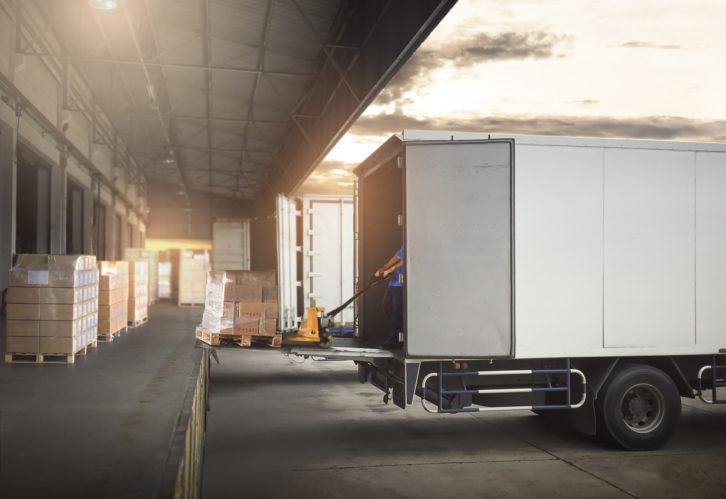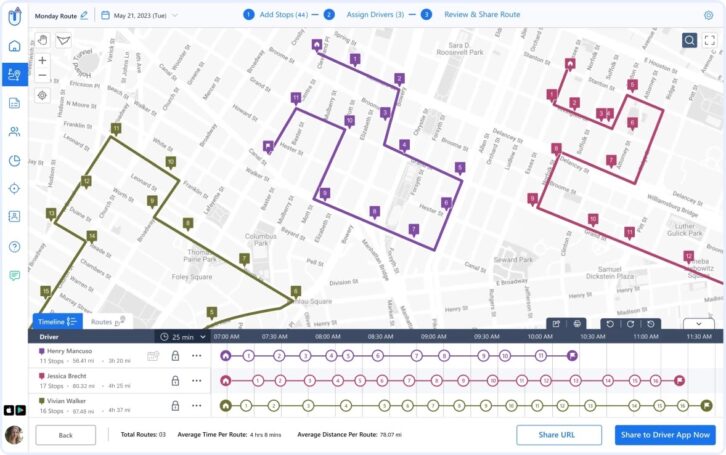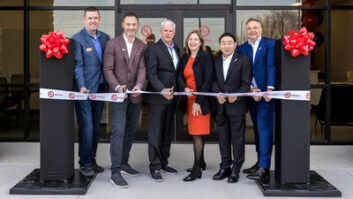
Efficient route planning is critical for the success of retail delivery operations. In the cutthroat universe of retail, guaranteeing timely and accurate deliveries while enhancing resources is central. This is where the automated route steps in to change the process.
By utilizing cutting-edge technology, automated route planning software offers many advantages that can fundamentally upgrade the productivity and viability of retail delivery operations. With real-time data analysis and advanced algorithms, retailers can create optimized routes that limit travel time, fuel utilization, and vehicle mileage.

Besides, by incorporating route optimization software into their operations, retailers can get the most ideal route possible, ensuring efficient delivery routes. This capability permits them to respond rapidly to changing circumstances like gridlock or client inclinations, guaranteeing ideal deliveries and further developing consumer loyalty.
We will also find out how this creative innovation can help us get the shortest route with route optimization software. So, without any further delay, let’s get started.
Challenges in Retail Delivery
Despite the advantages of automated route planning, retail delivery operations face a few difficulties that can impede proficiency and viability.
- High delivery volumes: Overseeing huge volumes of deliveries can prompt strategic difficulties and expand pressure on resources. Retailers might battle to designate adequate vehicles and drivers to deal with the responsibility, bringing about deferrals and shortcomings.
- Time-sensitive deliveries: Meeting tight delivery windows represents a huge test, particularly in metropolitan regions with heavy gridlock. Delays brought about by traffic or unexpected conditions can influence the general delivery timetable and consumer loyalty.
- Last-mile delivery complexities: Exploring complex last-mile routes, including narrow roads and high rises, can bring about postponements and failures. Delivery drivers might experience hardships tracking down exact addresses or getting to gated networks, prompting extended delivery times.
- Customer expectations: Rising client assumptions for quick and adaptable delivery choices expect retailers to adjust their delivery strategies continually. Clients expect ideal deliveries, ongoing following updates, and convenient choices like same-day or 24-hour delivery.
- Inventory management: Guaranteeing exact stock levels and ideal replenishment is fundamental to keeping away from stockouts and delivery delays. Unfortunate stock administration practices can prompt satisfaction issues, deferred deliveries, and disappointed clients.
- Competitive pressure: Intense competition in the retail business expects retailers to persistently upgrade their conveyance activities to remain ahead. Contenders offering quicker delivery times, free transportation, or inventive delivery choices can come down to retailers improving their delivery services to stay competitive.
Beating these difficulties is fundamental for retail delivery activities to boost proficiency and convey uncommon client support in the present cutthroat market scene.
How Does Automated Route Planning Work?
Automated route planning uses advanced algorithms and real-time data to advance delivery routes and smooth the delivery process.
- Data input: Automated route planning begins by inputting relevant data such as delivery addresses, vehicle capacities, time constraints, and traffic conditions. This information serves as the foundation for the route optimization process, permitting the product to create proficient delivery routes custom-fitted to explicit prerequisites.
- Route optimization: When the fundamental data is inputted, the product utilizes sophisticated algorithms to investigate and ascertain the most effective routes. These routes are intended to limit travel time, diminish fuel utilization, and enhance vehicle usage, eventually further improving overall delivery productivity.
- Real-time updates: Automated route planning software ceaselessly monitors traffic conditions and gets continuous updates from GPS systems. This permits the product to progressively change routes to stay away from blockages, mishaps, or street terminations, guaranteeing that drivers follow the most proficient ways to their destinations.
- Multi-stop sequencing: In addition to upgrading individual routes, automated route planning software likewise determines the ideal grouping of stops for every delivery route. By sequencing stops in the most proficient order, the product limits re-routes and lessens superfluous backtracking, further improving delivery effectiveness.
- Integration with GPS: Automated route planning software consistently incorporates GPS navigation frameworks to give turn-by-go headings to drivers. This integration guarantees that drivers follow the advanced routes precisely, permitting them to explore productively and complete deliveries on time.
Automated route planning software boosts delivery efficiency and adequacy through route upgrades, variation to evolving conditions, and seamless GPS coordination. This optimization not only streamlines logistics but also resonates with understanding the next generation of buyers, who prioritize comfort, speed, and sustainability in their shopping.
Benefits of Automated Route Planning

Automated route planning has various advantages for organizations engaged with delivery tasks, changing how routes are arranged and executed.
Increased efficiency
Automated route planning smooths out the delivery process by optimizing routes in light of different variables, for example, delivery addresses, vehicle limits, and time constraints. This optimization limits pointless stops and lessens overall travel time, prompting huge time and cost savings.
For instance, a delivery organization involving automated route planning might encounter a 20% decrease in delivery time and fuel costs because of enhanced routes.
Optimized routes
Automated systems produce ideal delivery routes by examining data, for example, traffic designs, street conditions, and delivery plans. These routes are intended to limit mileage and fuel utilization while amplifying productivity.
For instance, a courier service utilizing automated route planning might see a 15% decrease in mileage and fuel costs, bringing about significant expense savings over the long haul.
Improved customer satisfaction
Timely deliveries are crucial for enhancing customer satisfaction, and mechanized route planning assumes an imperative role in accomplishing this objective. By enhancing routes and guaranteeing timely arrivals, organizations can provide a superior conveyance experience to their clients.
For instance, a retail organization carrying out automated route planning might observe a 30% increment in consumer loyalty scores because of improved delivery performance.
Enhanced driver productivity
Automated route planning frameworks assist drivers with finishing more deliveries significantly quicker by furnishing them with optimized routes and turn-by-turn directions. This increases driver efficiency and diminishes stress, prompting improved job satisfaction and retention rates.
For example, a logistics company adopting automated route planning might encounter a 25% increase in driver productivity, bringing about higher effectiveness and productivity.
Real-time updates and monitoring
Automated route planning systems offer real-time tracking and updates, permitting businesses to monitor deliveries and respond immediately to any changes or deferrals. This improves delivery accuracy and accountability, prompting higher client trust and loyalty.
For instance, a food delivery service utilizing automated route planning might achieve a 95% on-time delivery rate because of real-time monitoring and updates.
Scalability and Flexibility
Automated route planning frameworks are profoundly versatile and adaptable to changing business needs and delivery demands. They can accommodate growth and expansion without compromising effectiveness or performance.
For example, a startup courier company can consistently scale its operations with an automated route planning system, taking care of increased delivery volumes and venturing into new business sectors effortlessly.
By harnessing the power of automation, organizations can streamline their delivery processes, decrease costs, and deliver exceptional service to their clients.
Conclusion
In summary, automated route planning presents an extraordinary solution for retail delivery operations, offering a large number of advantages that drive effectiveness, upgrade consumer loyalty, and improve overall performance. The benefits of automated route planning are evident, from increased effectiveness and streamlined routes to improved consumer loyalty and enhanced productivity.
As the retail landscape keeps evolving, businesses must stay ahead of the curve by utilizing innovative technologies like automated route planning. Therefore, by embracing automation, businesses can position themselves for long-term growth and prosperity in an increasingly competitive market environment.
About the Author
Emily Thompson, the Senior Content Specialist at Upper, introduces a game-changing route optimization software. With her tech-savvy approach and storytelling, she has become a master at crafting compelling narratives that captivate audiences and drive results.
See also: Another View: Two Industry Experts See Positive Signs For Economy’s Future













